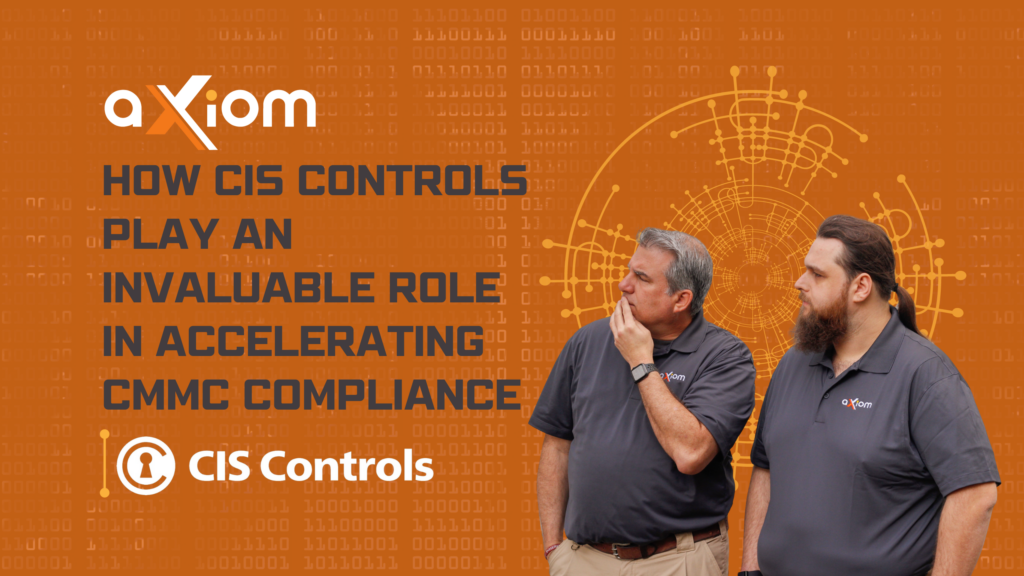
The Cybersecurity Maturity Model Certification (CMMC) program was created by the Department of Defense to protect the confidentiality of Controlled Unclassified Information. It’s been in the works for several years now; however, it’s finally nearing a point where it will be a requirement to do business with the DoD. Some organizations have already begun working on their CMMC posture, while others are trying to decide where to begin.
The CIS Controls can be a powerful framework and a helpful tool. Serving as fundamental security best practices, the CIS Controls align closely with CMMC 2.0 requirements, offering a structured approach to strengthening an organization’s cybersecurity posture.
Let’s delve into the synergy between CIS and CMMC and how leveraging these controls can significantly accelerate the path to achieving CMMC 2.0 compliance.
Significance of CMMC 2.0 Compliance
CMMC 2.0 introduces a tiered approach to cybersecurity maturity, ranging from foundational cybersecurity hygiene to expert practices. The framework comprises three levels, each with specific requirements that organizations must meet to achieve compliance. The level of compliance will vary based on the types of data an organization has under their care and will likely be dictated by the contracts the organization has in place.
For organizations participating in the defense industrial base, achieving CMMC compliance is crucial.
Understanding the CIS Framework
The Center for Internet Security (CIS) Controls framework provides a comprehensive set of cybersecurity best practices that can align closely with CMMC requirements. These controls offer a roadmap for organizations to implement foundational security measures and mitigate common cyber threats effectively. The CIS framework consists of 18 controls categorized into three groups: Basic, Foundational, and Organizational.
Key CIS Controls That Relate to CMMC Compliance
1. Inventory and Control of Enterprise Assets (CIS Control 1, CIS Control 2, CIS Control 3)
These controls focus on understanding what an organization has under its control: namely, the hardware used in the organization, the software used in the organization, and lastly the data that the organization has. An organization cannot achieve a robust security posture nor meet compliance requirements if it does not know what it has in place.
Furthermore, multiple CMMC controls require the organization to have these inventories, practices, and procedures in place. As companies look towards larger compliance obligations, it becomes absolutely critical to have an accurate understanding of the assets they possess.
2. Secure Configuration of Enterprise Assets and Software (CIS Control 4)
This control involves ensuring that enterprise assets and software are securely configured to prevent unauthorized access and protect sensitive data. CMMC also has its’ own set of controls around secure asset configurations.
3. Account Management (CIS Control 5)
CIS Control 5 and CMMC both require organizations to manage accounts with access to their environment appropriately. Control 5 focuses on the management of the accounts—namely having an inventory of accounts, ensuring that there are unique passwords, that dormant accounts are removed, and that privileged accounts are managed appropriately.
For instance, IT and Security staff may need more privileged accounts to conduct their job duties, however, your HR department likely does not need the same level of privilege on the network (sorry HR folks). Organizations benefit by closely monitoring and controlling privileged accounts.
As such, organizations looking at CMMC may benefit by implementing this control as a stepping stone to the much more complex CMMC requirements.
4. Access Control Management (CIS Control 6)
Use processes and tools to create, assign, manage, and revoke access credentials and privileges for user, administrator, and service accounts for enterprise assets and software.
Users and services will have access to data within your organization. Both CMMC and the CIS Controls have a series of requirements to review this access in order to safeguard sensitive information. Organizations considering CMMC could benefit by implementing the safeguards outlined in this control as they begin to formalize their procedures around accessing sensitive data.
5. Incident Response Management (CIS Control 17)
Establish and maintain an incident response program, including the development of policies, plans, procedures, defined roles, training, and communication strategies. This proactive approach ensures you will be ready to handle and respond to cyberattacks.
The controls listed here are simply an example of some of the ways the CIS Controls can complement CMMC. There are many more controls within the CIS framework that overlap with CMMC.
However, the CIS Controls are NOT a replacement for CMMC. They can be very complimentary of one another and for organizations starting their compliance journey, they can be used as a jumping off point. And for organizations who do not need to align to CMMC, the CIS Controls are an excellent framework they can align with.
CIS Controls as a Stepping Stone to CMMC 2.0
The CIS framework serves as a valuable stepping stone to achieving CMMC 2.0 compliance by aligning with specific CMMC requirements and addressing foundational security practices. By implementing CIS Controls, organizations can streamline the implementation of security measures and establish a strong foundation for achieving compliance across multiple CMMC levels.
Unlocking CMMC Compliance with Axiom
By leveraging the alignment between CIS Controls and CMMC requirements, organizations can streamline their compliance efforts and enhance their overall cybersecurity posture.
Contact Axiom today for expert guidance in achieving CMMC 2.0 compliance. Our team of cybersecurity professionals is dedicated to helping organizations achieve and maintain compliance while bolstering their resilience against evolving cyber threats.